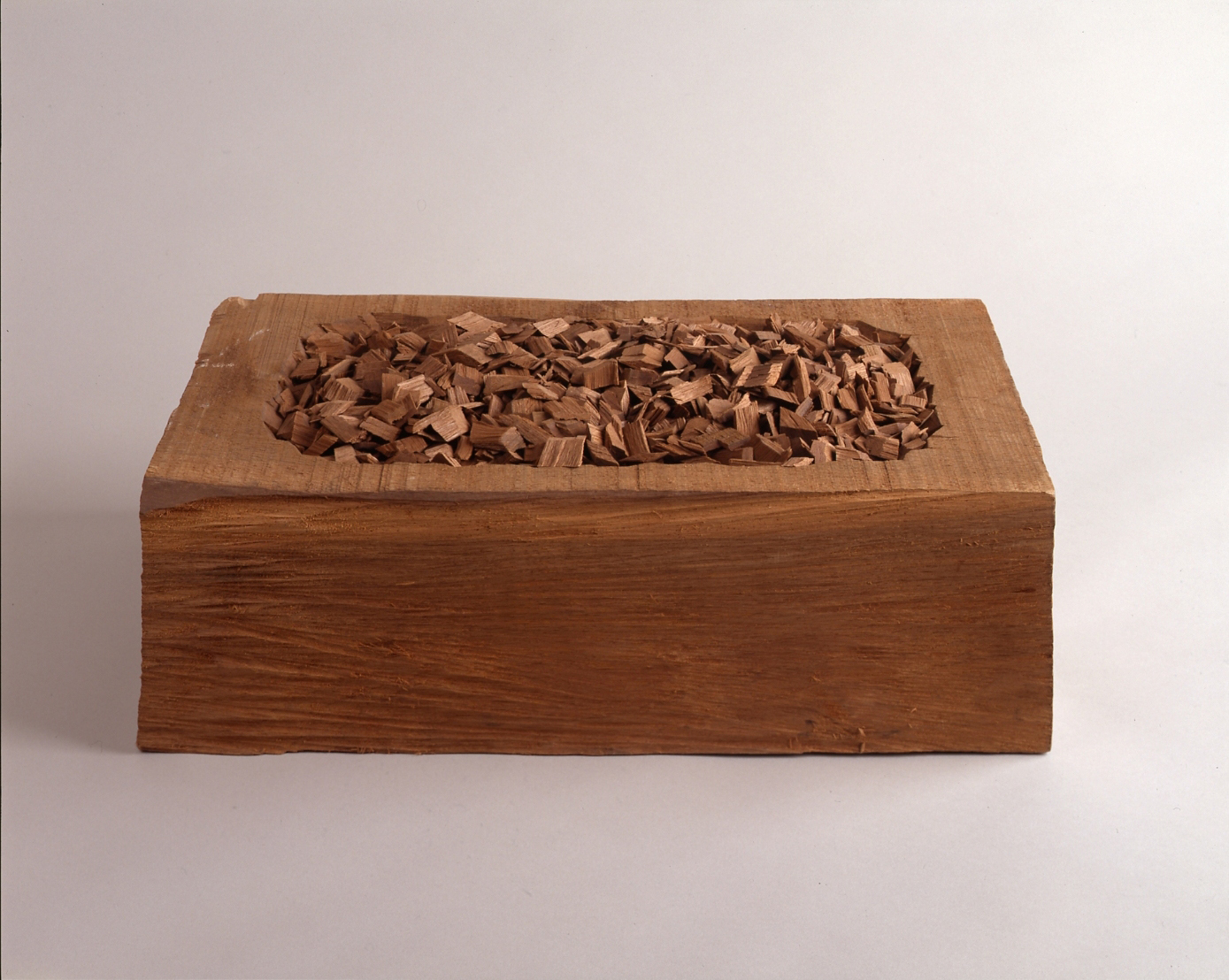In the late 1960s, the mono-ha (school of things) movement arose from the Japanese art-school scene, with the Korean-born artist Lee Ufan — who went from the philosophy department at Nihon University to teaching at Tama Art University — as its most renowned proponent. Using raw materials and with a minimal level of manipulation, mono-ha styled itself as anti-representational, with an implied opposition to mimesis as a "Western" art tradition. Rather than focusing on the form and value of the art object, the emphasis was on understanding existence and the relation between matter, its environment and human consciousness.
A few mono-ha works, such as a Jiro Takamatsu's "Oneness of Wood," which challenges us to comprehend whether a wooden block filled with wood chips taken from itself has fundamentally changed as a substance, are included in "Things: Rethinking Japanese Photography and Art in 1970s." Another piece, "Push Up" by Lee Ufan — a sheet of paper marked by a grid of rough holes tinged with sumi ink — exemplifies the artist's interest in abstract expressionism, minimalism and the physical properties of different materials.
The main premise of the exhibition, however, is to connect the practice of mono-ha, which is going through something of a revival, to the contemporaneous photographic experimentation of Takuma Nakahira, Yutaka Takanishi, Kiyoji Otsuji and Issei Suda and their investigation into whether the reality of things could be perceived without the interference of the photographer's subjectivity.



